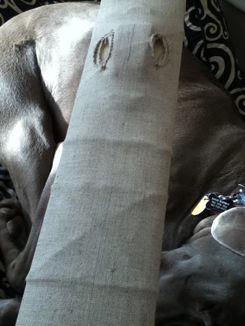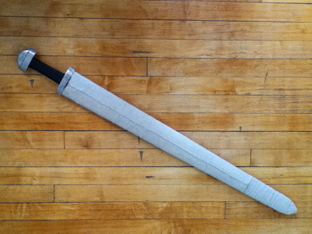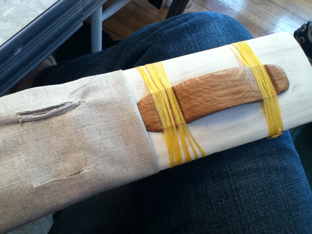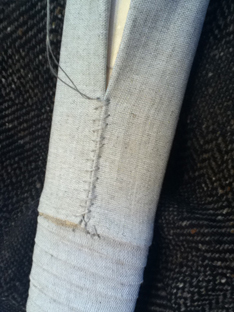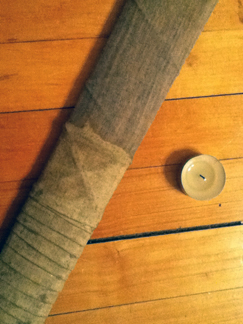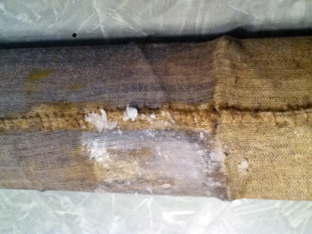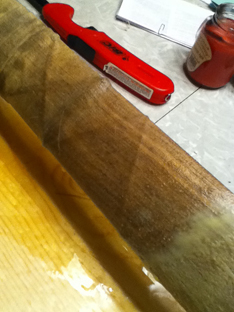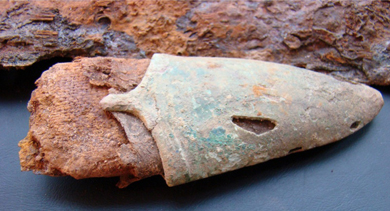1. Is the X-shaped bracing both structural and symbolic, or just one and not the other?
2. Should the X-ties and diagonal cord wrapping be applied before directly to the wood for more secure bracing, or is applied on top of the linen to assist in keeping the linen tightly wrapped?
3. Illustrations don't show a belt slider, but it may be hidden under the linen wrap. That works, but it exposes the underlying wood to moisture or whatever else may creep into the opening.
4. What is the finished scabbard coated with for protection? The hide-glue would likely come undone in the rain and beeswax gets gooey with handling in hot weather.
In keeping with the tradition of experimental archaeology, I tried the cross-bracing under the linen this morning, and I sewed up the seam rather than wrap & overlap. I also cut holes for access to the belt slider. The sewing worked great and was much cleaner than my earlier attempt at wrapping the scabbard with hide-glue-soaked linen. With a snug-fitting sewn cover, it wouldn't be too hard to rub on the hide glue since it penetrates quickly.
